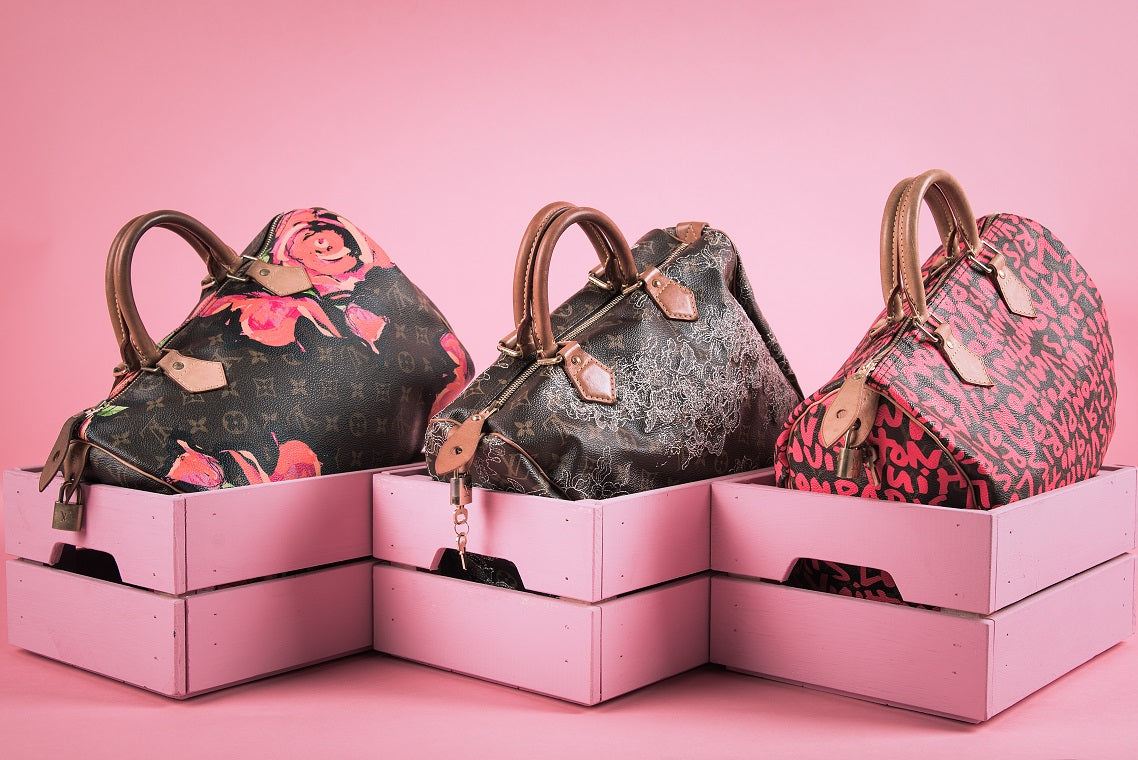
As a compass to exploration, so too is Louis Vuitton to the world of luxury travel gear.
Since its inception in 1854, Louis Vuitton has stood as the epitome of sophistication in luggage. Each decade, the House of Vuitton crafts pieces that not only abide by the era's esthetic zeitgeist but also surpass it, establishing trends rather than following them. It's a heritage of innovation, with the trunk-maker’s name becoming synonymous with traveling in style, each piece a study in the art of packing and journey.
Evolution of Louis Vuitton Luggage
Louis Vuitton's legacy as a trunk maker began before the establishment of the company itself. In 1837, a 16-year-old Louis Vuitton arrived in Paris on foot and commenced an apprenticeship with Monsieur Maréchal. During this era, transportation primarily relied on horse-drawn carriages, boats, and trains, leading to rough handling of luggage. Travelers sought skilled craftsmen to carefully pack and safeguard their belongings.

Louis Vuitton swiftly gained recognition as a skilled artisan at Monsieur Maréchal's workshop in Paris. This marked the foundation of his specialized profession, the initial steps in his journey within a craft that demanded expertise in crafting custom boxes and later, trunks tailored to the preferences of clients. After 17 years of honing his skills, Louis Vuitton established his own workshop at 4 Rue Neuve-des-Capucines near Place Vendome.
By the 20th century, with the burgeoning age of steamships and rail travel, the Keepall and the Alzer cases emerged—response to the globe-trotters' call. These transformed how we carry our worlds between destinations, marrying function with elegance.

The innovation continued with the introduction of the rolling luggage collection, signifying ease and mobility in the modern era of travel. The LV suitcases evolved, simplifying luxury voyaging.
The Birth of LV Trunks
The inception of LV trunks heralds the legacy of Vuitton—robust craftsmanship combined with avant-garde aesthetics that meet the exigencies of global explorers.
The iconic flat-top trunk was envisioned by Louis Vuitton himself, transforming luggage from bulky to streamlined, empowering ease of travel.
Using his previous experience as an apprentice for a box maker on the Rue Saint-Honoré, Vuitton conceived of an innovative transformation of leather suitcases.
A new concept was proposed to replace the conventional curved lid that prevents leakage with a waterproof coated canvas fabric for the trunks’ exterior and his designs had flat tops, far more similar to the luggage we use today.

Typical example of trunk these times. Leather was not waterproofed, therefore most trunks had domed lids to allow water to run off, but this makes stacking almost impossible.
These trunks were first introduced by Louis Vuitton in 1858, and quickly gained popularity among this specific demographic due to their lightweight design, durability, and ease of transportation. Vuitton created a waterproof coated canvas fabric for the trunks’ exterior and his designs had flat tops, far more similar to the luggage we use today.

A historic flat-top trunk made in 1879 in the Gris Trianon canvas
At that time, they did not include the signature motifs or traits that are now associated with the brand.
First introduced in 1896, LV monogram became one of the most distinctive features of Louis Vuitton trunks. The monogram was designed to prevent counterfeiting, and it quickly became a status symbol for those who could afford it.
Here are some of Louis Vuitton's key innovations in trunk design in the 1850s:
- Flat-stacking trunks
Vuitton designed flat-topped trunks that could be easily stacked for convenience in travel and storage. This was a major innovation from the previous domed trunks.

His Trianon canvas was treated to be waterproof, unlike leather luggage which cracked. This made it durable and weather-resistant.

- Secured corners
Vuitton introduced brass corners with reinforced edges to protect the trunk and add structure. This improved durability.
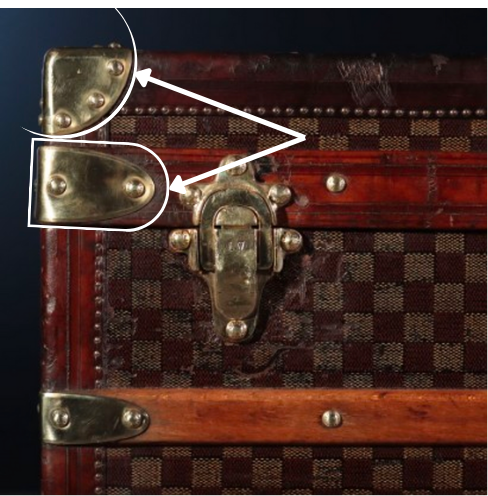
- Beveled edges
The trunks were engineered with beveled edges and grooves to allow rainwater to run off rather than seep in.
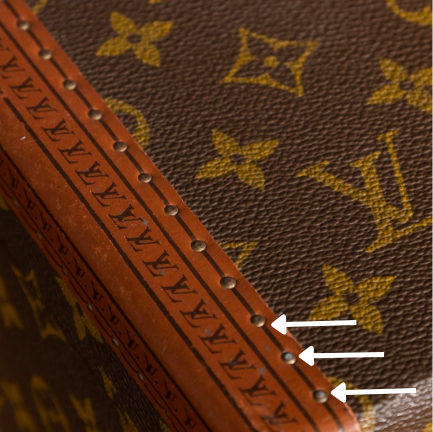
- Lightweight poplar wood
Using strong but lightweight poplar wood frames increased durability while decreasing weight.
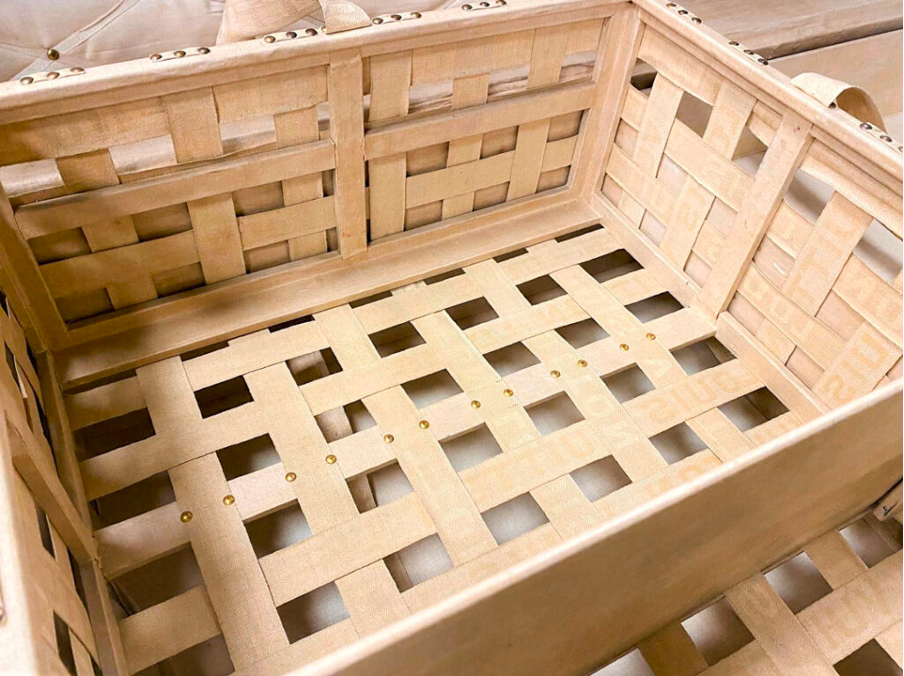
- Hidden hinges
Hinges were designed on the inside of the trunk rather than the exterior for a smoother, more elegant look.
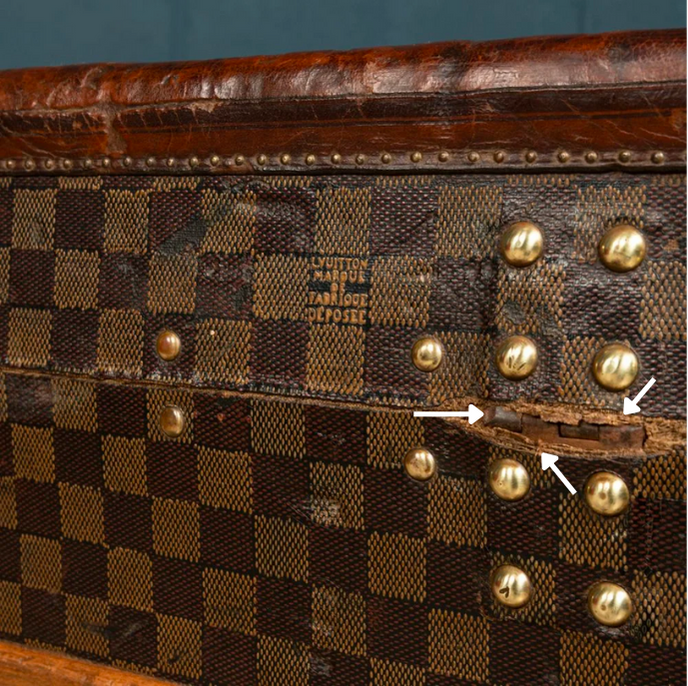
- Canvas binding
The Trianon canvas was hand-bound using brass nails for added strength.

- Personalization
Customers could personalize with initials or designs, introducing customization.
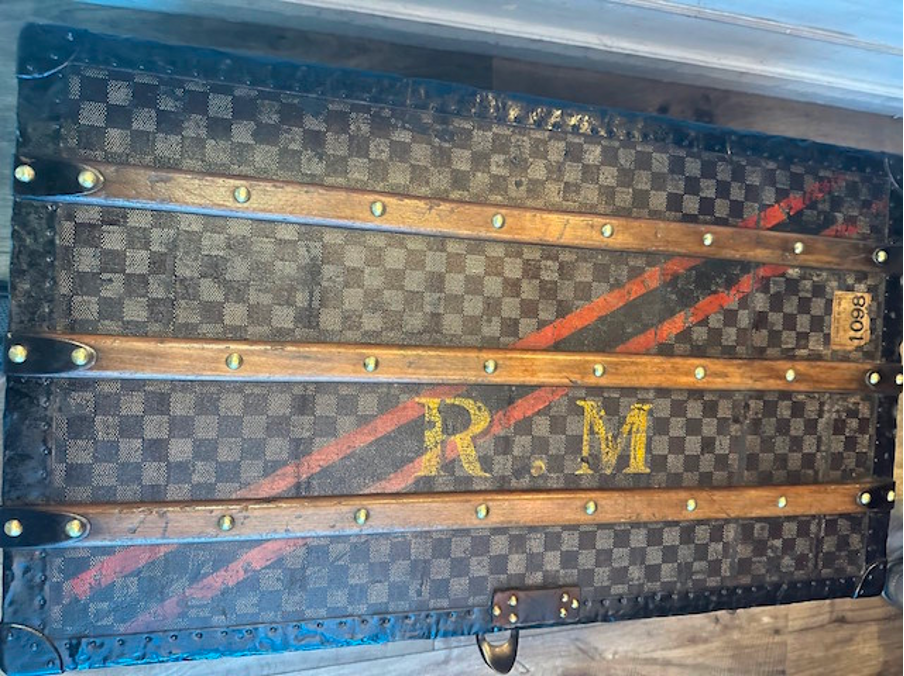
Vuitton's innovative designs and high-quality craftsmanship made his trunks stand out from luggage of the time and set a new standard for luxury travel. His technical improvements marked a major shift forward.
Over the years, Louis Vuitton has continued to innovate and improve their trunks. Today, they offer a wide range of trunks in different sizes and materials, including leather and exotic skins. Despite the changes in design and materials, Louis Vuitton trunks continue to be a symbol of luxury and sophistication
Here are a few key innovations and changes they have made:
- Materials - Originally made of rigid leather and poplar wood, they now utilize lightweight canvas, exotic leathers, acrylic glass, carbon fiber, and aluminum among other modern materials. This provides more durability and options.

- Size - Older trunks came in very large steamer sizes for extensive travel. Today's offerings include smaller carry-on and cabin sizes for air travel, as well as mini trunks for everyday use.

- Features - Modern trunks have updated features like TSA-approved locks, interior organizational systems, self-repairing zippers, humidity sensors, and even air purification systems. The technology has advanced.

- Customization - Louis Vuitton offers extensive customization options today, from monograms and colors to personalization of initials and designs so each trunk is unique.

So in many ways, Louis Vuitton trunks are still iconic of luxury travel heritage but also continue to be innovated as both fashion and technology progresses. The core value of expert craftsmanship and high-quality materials remains unchanged over time.
The Streamline Era: 1930s Keepall Bag
The 1930s saw Louis Vuitton's Keepall Bag redefine travel with its lightweight structure and elegant design, a beacon of modernity and practicality. This luggage piece epitomized the Streamline Era's ethos of sleek, functional travel accessories that catered to the nouveau mobile elite.

Introducing an unprecedented level of portability, the Keepall's versatility was unmatched. It served as the quintessence of portable luxury, designed for those who demanded both style and functionality.
Crafted from the iconic Monogram canvas, this sophisticated duffel style bag boasted a capacious interior devoid of excessive compartments. Its attributes allowed globetrotters to pack efficiently and travel in style, mindful of the rapidly changing transit methods, from luxury liners to the nascent field of aviation.
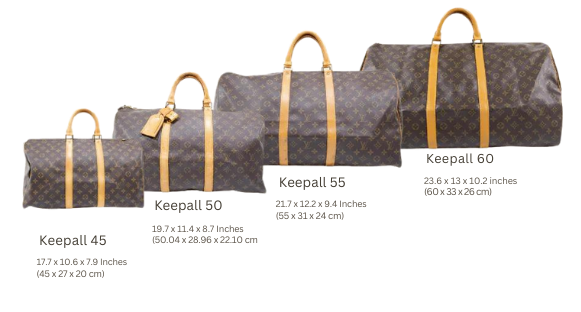
As a pinnacle of LV craftsmanship, the Keepall seamlessly combined form with function, paving the way for a new paradigm in luggage design. It offered a refined yet practical solution for the discerning traveler—a testament to Louis Vuitton's commitment to creating ageless pieces that transcend trends, affirming the Keepall as "iconic" in the lexicon of high-end travel.
Louis Vuitton Trunks in 1940s
In the 1940s, Louis Vuitton offered a variety of suitcase types, reflecting the brand's long-standing heritage in luxury travel goods. While specific model names from the 1940s are not widely documented, we can infer the types of suitcases available during that era based on Louis Vuitton's historical offerings and the evolution of their luggage line. Here are some types of Louis Vuitton suitcases and luggage pieces that would have been available or represent the era:
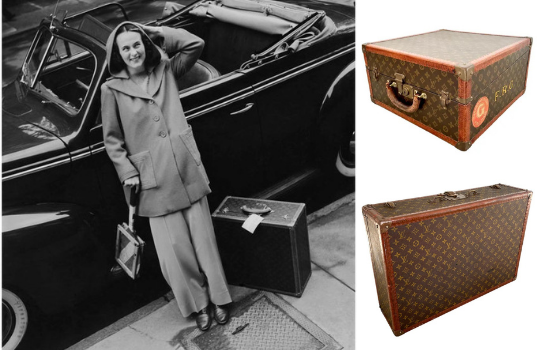
The craftsmanship and innovation behind Louis Vuitton's luggage have made their pieces highly sought after, both in the past and today. While the specific models from the 1940s might not be easily identified, the types of luggage mentioned above give us an idea of what travelers of that era would have used. These pieces were distinguished by their high-quality materials, meticulous construction, and the luxury status they conferred upon their owners.
Louis Vuitton luggage in 1950s
Luggage by Louis Vuitton from the 1950s remains an enduring representation of opulence and refinement. Meticulously fashioned with premium materials and an exquisite attention to detail, these vintage items hold great appeal for collectors and fashion aficionados alike. The iconic LV monogram and timeless design not only serve a practical purpose for voyages but also exude a sense of sophistication and style. Whether showcased as a prized collectible or utilized for travel, the allure of Louis Vuitton luggage from the 1950s endures through the ages.
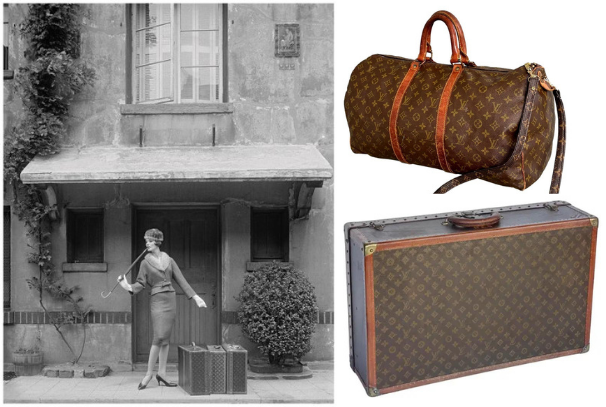
Louis Vuitton luggage in 1960s
Louis Vuitton luggage from the 1960s is a classic and timeless piece of luxury travel gear. Known for its iconic monogram print and high-quality craftsmanship, these vintage pieces are highly sought after by collectors and fashion enthusiasts alike. The sleek and elegant design of Louis Vuitton luggage has stood the test of time, making it a symbol of sophistication and style. Whether used for travel or as a statement decor piece, these vintage suitcases and bags continue to exude an air of luxury and refinement.
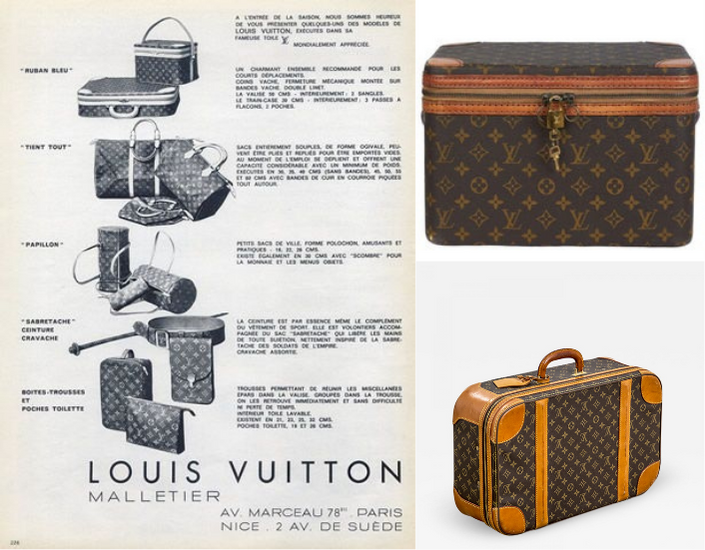
Louis Vuitton language, in 1970s
Louis Vuitton luggage from the 1970s is a classic and timeless piece of luxury travel gear. The brand's signature monogram canvas and high-quality craftsmanship make these vintage pieces highly sought after by collectors and fashion enthusiasts alike. The iconic LV logo, sturdy leather trim, and brass hardware are all hallmarks of Louis Vuitton's design aesthetic, and they continue to be popular features in the brand's luggage collections today. Whether you're a vintage fashion connoisseur or simply appreciate the enduring appeal of well-made luggage, a piece of Louis Vuitton luggage from the 1970s is sure to make a stylish statement on your travels.

Louis Vuitton trunks in 1980s
Louis Vuitton luggage from the 1980s is a classic and timeless piece of luxury travel gear. Known for its iconic monogram canvas and high-quality craftsmanship, these vintage pieces are highly sought after by collectors and fashion enthusiasts alike. The design of Louis Vuitton luggage has remained relatively unchanged over the years, making it a symbol of enduring style and sophistication. Whether it's a vintage trunk, suitcase, or duffle bag, owning a piece of Louis Vuitton luggage from the 1980s is like owning a piece of fashion history. It's a testament to the brand's enduring legacy and its ability to transcend time and trends. With its elegant design and durable construction, Louis Vuitton luggage from the 1980s continues to be a symbol of luxury and refinement for travelers around the world.

The Pinnacle of Portability: 1990s Pegase Luggage
Inherently reflective of its era's dynamic mobility, the 1990s Pegase case epitomized the essence of travel refinement, boasting a streamlined exterior with functional simplicity. Its intelligent design engendered unparalleled ease of movement through bustling terminals, establishing Pegase as the sophisticate's travel companion.
Engineered for practicality, its telescopic handle became a game-changer. The Pegase marked the transition from handheld splendor to the convenience of wheeled navigation, uniting luxury with functionality in a harmonious blend.

Simultaneously, the Pegase's in-line skate wheels redefined maneuverability. These robust components (solidly riveted for enduring reliability) offered travelers a smooth gliding experience, unparalleled at the time.
Its thoughtful compartmentalization championed the art of organized packing. Designed to maximize capacity while maintaining sleek symmetry, compartments catered to meticulous travelers, ensuring each belonging had its rightful place.
Crowning the Pegase's allure was the distinctive Monogram canvas. This emblematic pattern conferred upon it a timeless dignity, cementing its status as a paragon among discerning travelers who prized the fusion of iconic aesthetics with pioneering functionality.
Today, the Pegase remains a testament to Louis Vuitton's ability to innovate within the realm of luxury travel. Its enduring design continues to inspire and accommodate the contemporary voyager's needs, merging storied craftsmanship with forward-thinking design principles.
The Eco-Friendly Approach: 2020s Canvas Choices
Louis Vuitton's commitment to sustainability shapes its canvas selections of the 2020s, mirroring society's eco-conscious sentiments. These coveted fabrics are not only durable but they also pave the way for environmentally responsible luxury.
The maison's use of recycled and bio-based materials for recent luggage lines maximizes both elegance and eco-sensitivity. This manifests Louis Vuitton's reverence for the environment.
Extending beyond mere material choice, Louis Vuitton employs innovative techniques to ensure that their canvas offerings boast reduced environmental impact. This balance of aesthetic allure and ecological responsibility represents a pinnacle in their progressive journey.
True to the vanguard of luxury travel goods, Louis Vuitton's eco-friendly canvas is intertwined with the house's heritage craftsmanship. By evolving with the times, they ensure that each piece not only exudes sophistication but also embodies a forward-thinking ethos, making "green" the ultimate statement in opulent travel.
The Celebrity Effect on LV Luggage Trends
In the tapestry of Louis Vuitton's storied evolution, the pull of celebrity influence is unmistakably profound. Luminaries from the silver screen to sports arenas have long brandished the house's travel goods, heralding new chapters of desirability. This symbiosis of stardom and style propels trends, with celebrities' adoption of specific models igniting global fashion currents. As such, Louis Vuitton pieces become more than mere travel accessories; they're emblematic totems that deftly weave the fabric of haute culture and societal emulation, underscoring the brand's enduring legacy.

Exclusive Collaborations and Limited Editions
Louis Vuitton's partnerships with renowned artists have elevated luggage into the echelons of high art. The synergy between creative titans and this storied maison has delivered masterpiece collections coveted by connoisseurs.
Emblematic designs gain new life through visionary reinterpretation. These limited releases embody rarity and desirability, fueling collector fervor for exceptional pieces.
In a dynamic fusion of fashion and fine art, collaborations with creators like Takashi Murakami and Yayoi Kusama infused whimsy and avant-garde flair into Louis Vuitton's classic motifs. The juxtaposition of time-honored style with contemporary boldness proved irresistible to aficionados of both art and fashion.
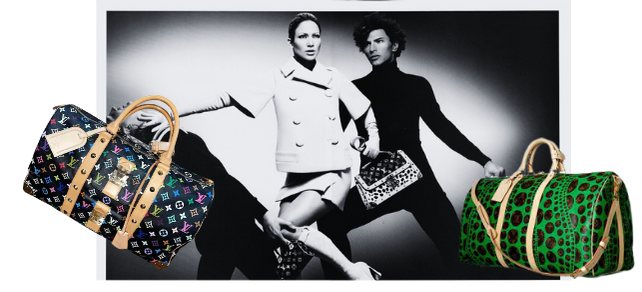
The anticipation surrounding these partnerships often culminate in launch events that resemble gallery openings, underscoring their exclusivity. Securing a limited edition or artist collaboration becomes a significant triumph; akin to an art acquisition, it's a testament to the collector's discerning taste and dedication to the pursuit of luxury. Each piece hints at a narrative beyond mere fashion—it's a storied artefact, a tangible connection to the pulse of the zeitgeist.
What is the average price of a Louis Vuitton luggage items?
The average price of a Louis Vuitton luggage piece varies depending on the specific style and collection. Even nowadays Louis Vuitton offers a wide range of trunks, from the iconic monogram canvas to luxurious leather options. On average, you can expect to pay anywhere from $3,000 to $15,000 for a Louis Vuitton trunk depending on its age and rarity.
However, it is important to note that certain limited edition or rare pieces can command much higher prices, reaching into the tens of thousands of dollars. The price of a Louis Vuitton bag is influenced by factors such as materials used, craftsmanship, design, and the brand's exclusivity and reputation.
When considering purchasing a Louis Vuitton trunk, it is crucial to ensure its authenticity. Due to the popularity of the brand, counterfeit versions of Louis Vuitton bags are unfortunately prevalent in the market. To guarantee authenticity, it is recommended to purchase from authorized Louis Vuitton retailers or directly from the brand's official website.
Investing in a Louis Vuitton bag can be a timeless addition to any luxury handbag collection. The brand's heritage, craftsmanship, and iconic designs make these bags highly sought after by fashion enthusiasts and collectors alike.






